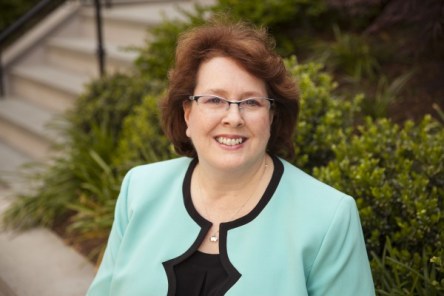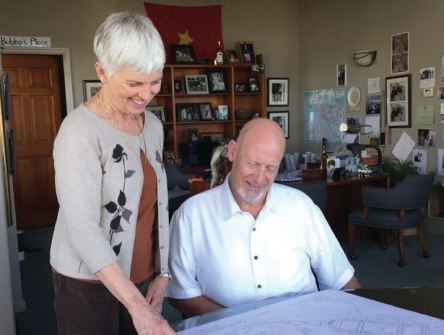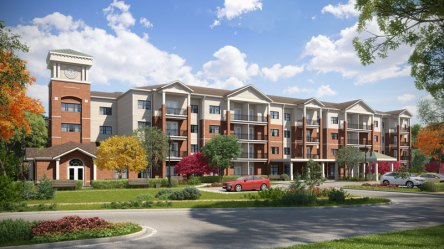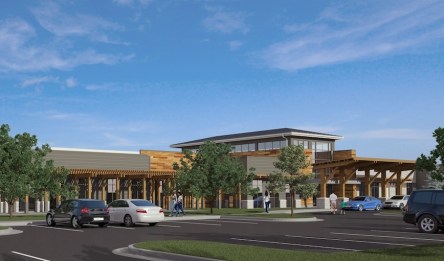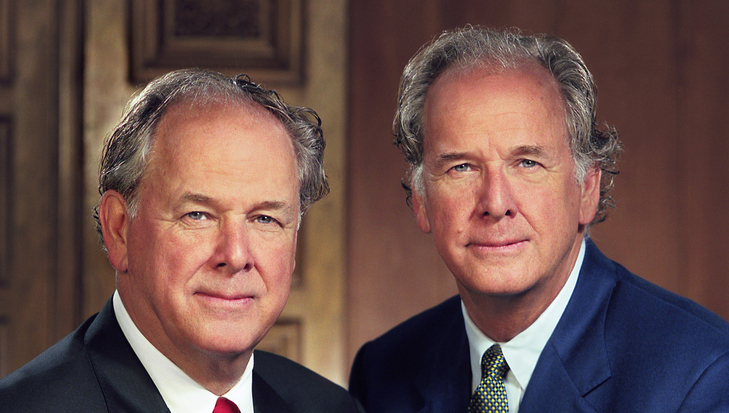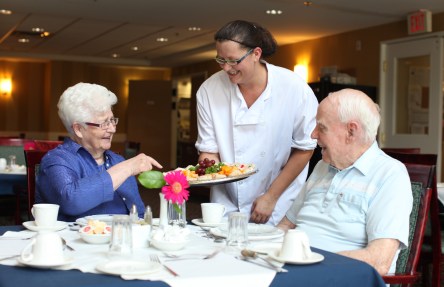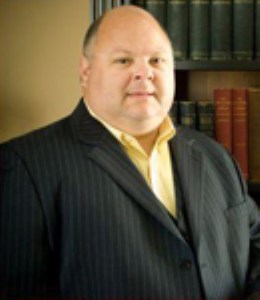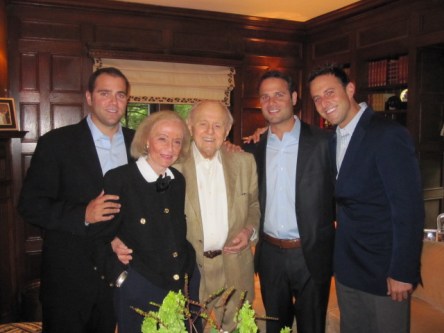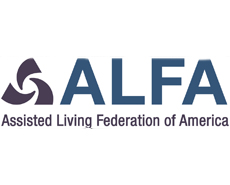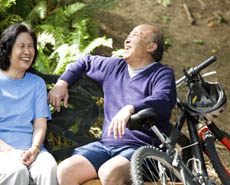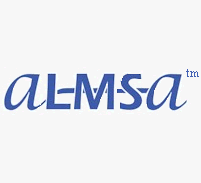Yardi recently released RentCafe® Senior Living™, the latest addition to the Yardi Senior Living Suite™. This much anticipated tool makes it easier than ever for senior care providers to promote transparency and engagement with seniors and their responsible parties. Imagine one fully integrated site that allows your clients to monitor the care experience and communicate with care providers. Now imagine that the same portal allows residents to make payments and track maintenance requests. With these features combined, you’ve only brushed the tip of iceberg. RentCafe Senior Living is capable of so much more. RentCafe Senior Living fuels customer satisfaction by combining access and convenience. From a desktop or mobile device, residents and their loved ones can take an active role in the care experience. Lengthy wait times on the phone and restricted office hours no long impeded access. With RentCafe Senior Living, users have resources at their fingertips. At any time, authorized users have access to resident health records, prescriptions, activities calendars and participation logs. Residents’ loved ones can rest assured that their senior is cared for and enjoying the amenities that the community has to offer. One of the most popular features of RentCafe Senior Living is the convenient online bill pay tool. Authorized users can access current and past statements. They then have the choice to make a single or reoccurring payment. Withdrawal options include ACH, credit card and debit card accounts. If there is ever a question, users can contact the care provider directly. Problems are reported and tracked in real time. Both users and care providers stay up-to-date on the most recent developments. Another popular feature is the maintenance request option. Web savvy residents or visitors can report problems and track follow-up efforts from their smartphones. Service requests initiated through...
Repurpose + Revitalize...
Congregate Housing Management
The concept of home comes in many shapes and forms. For the senior residents of South Hills in Pittsburg, home arrived in the shape of a high school. A school was probably one of the last places that seniors thought they would spend their golden years, yet Yardi client Congregate Management Services and its development arm a.m. Rodriguez Associates saw an unparalleled opportunity in the vacant property. Account Manager Terri Zaegel recalls the conceptualization of the senior housing community. “The City actually came to Anthony Rodriguez and said, ‘We have this huge, beautiful building. We don’t want it torn down. We don’t want that space just vacant. Can you help us out?’ He developed it into housing for seniors.” Rodriguez, founder and chairman at Congregate Management Services, has gained a reputation throughout the region for his ability to transform vacant commercial and industrial properties into beautiful multifamily housing. His gift is helping small cities and towns breathe new life into some of their most challenging neighborhoods. The repurposing projects prevent economy-crippling urban decay. According to the Pittsburg Community Reinvestment Group (PCRG), a study in nearby Philadelphia reveals that houses within 150 feet of a vacant or abandoned property experienced an average net loss of $7,627 in value. Governments lose significant tax revenue on vacant properties as well, sometimes averaging as much as 83 percent of the owed balance. There is a strong correlation between vacant properties, an uptick in the cost of municipal services, and an increased crime rate. The PCRG report states that “41 percent of abandoned buildings could be entered without use of force; of these open buildings, 83 percent showed evidence of illegal use by prostitutes, drug dealers, property criminals, and others.” Arson and vandalism are among other crimes that plague neighborhoods with...
Oakmont Senior Living...
A stellar senior standard
Many couples would deem themselves successes to have raised five children. Bill and Cindy Gallaher not only did that, but also founded and built senior community developer/builder Oakmont Senior Living in Santa Rosa, Calif. For good measure, they also founded an international adoption agency. Married for more than 41 years, the Gallahers brought two daughters into the world and adopted three other children. Along the way, they’ve built more than 40 senior communities, including assisted living, independent living and continuing care retirement communities. But they have no intention of resting on their laurels. Currently under construction on four sites, they expect to begin construction on as many as a half dozen additional locations this year. Last year, Oakmont Senior Living captured the 2014 MultiHousing News Excellence Award, Best New Development: 55+ for its Fountain Grove Lodge in Santa Rosa, Calif. The development is the nation’s first independent senior community for lesbian, gay, bisexual and transgender individuals, with the option of continuing care services. The prospect of working with a partner didn’t appeal to the Gallahers, but the idea of building for the LGBT community did because they felt it would fill an important social need. The initial project undertaken in 1978 by Bill and Cindy Gallaher was a small spec house in Davis, Calif. Cindy’s contribution was choosing the finish material, and helping with some construction tasks. Bill handled the rest of the project himself, from drawing the plans to the finish work, Cindy recalls. “From that small beginning to the current day, we have worked as a team in all our development and construction projects,” she said. “I believe our success, both as a couple and as partners in business, has been rooted in a division of labor, and in the deep respect...
Miller-Valentine Group...
Stylish Senior Living
As the nation’s apartment industry revels in Gen Y’s affinity for apartment living, developing high-density, high-amenity projects in urban centers across America, there is another force shaping the industry: aging Boomers. In 15 years one in five Americans will be 65 and older and the 50-plus generation will swell by 23 million individuals, reaching 132 million, data from the Joint Center for Housing Studies of Harvard University shows. This high-velocity growth is already spurring concern within the industry in regards to providing adequate housing to the nation silver-haired demographic. One company that has its eye on the future and is planning to meet the needs of aging Boomers is Miller-Valentine Group (MVG). Founded in 1963, Miller-Valentine has been developing, building and managing multifamily housing for over 30 years. The company’s portfolio includes both luxury and affordable housing, as well as senior and military housing. With a presence in 17 states, MVG is the 24th largest owner of affordable real estate in the country and has developed in excess of 13,000 units. While the company continues the deliver non-specialized apartment housing too, shifting American demographics are evident in the company’s development pipeline. Of the seven apartment communities that will open through summer 2015 three are designed for adults 55 and older and one is targeting residents 62 and over. Miller-Valentine’s independent living communities are designed to meet the needs and desires of adults over the age of 55. MVG collaborates wit h federal and state housing assistance programs to deliver quality housing for aging adults at a moderate price. To accommodate the active lives of its residents, MVG offers home maintenance-free independent living, with amenities such as community rooms, walking paths and community events, ensuring social, educational and recreational opportunities. One such community is Ashley...
Yardi Senior CRM
Sales, Marketing, Mobility
Yardi announced today the release of its new Yardi Senior CRM product, an advanced customer relationship management solution built into the Yardi Voyager® Senior Housing platform and integrated with all the Yardi Senior Living Suite™ products. “We matched the capabilities of a traditional CRM system with the workflows unique to senior living, and we did so within a complete business solution built on the latest mobile and Web-based technology available,” said Eric Kolber, vice president of senior living for Yardi “Yardi Senior CRM delivers powerful metrics to calculate return on marketing investment, enables insightful sales pipeline projections using real-time data, and facilitates accurate pricing proposals for prospective residents based on assessed healthcare recommendations,” explained Kolber. Data generated through Yardi Senior CRM flows freely throughout the Yardi Senior Living Suite. “The complete integration of our ERP, CRM, and EHR solutions streamlines workflows and improves data integrity. For example, when a prospect hits a certain point in the sales cycle, Senior CRM notifies nurses that a needs evaluation is required, and their resulting recommendations automatically flow through to subsequent pricing proposals. Information is easily shared between sales and clinical staff, and all relevant data carries forward to billing functions and accounting personnel. No interfaces are required, and no redundant data entry is needed. Staff are kept informed and alerted to actionable items in real time,” said Kolber. Yardi Senior CRM is a browser-based solution accessible from any desktop computer, laptop, tablet, or smartphone. “Senior CRM gives leasing agents mobile access to all of the tools they need to easily and effectively work with prospects and convert leads into sales,” added Kolber. Yardi Senior CRM is a component of the Yardi Senior Living Suite which includes Yardi Voyager Senior Housing for managing occupancy, accounting, and property management,...
CrowdStreet & Mainstreet...
Creative real estate funding
Earlier this year, an overhaul to the Jumpstart Our Business Startups Act (JOBS) opened to the doors to new sources of startup capital. Several changes are still under evaluation yet Section II, which dictates the guidelines for advertising, now allows firms to use ads to garner support from accredited investors. As a result, several commercial projects have successfully raised the funds needed to get off of the ground—some raising as much as $30 million. Leading senior housing developer, Mainstreet, successfully used crowdsourcing to jump start its Bloomington, Indiana senior rehabilitation facility. In addition to its traditional marketing strategy, Mainstreet took advantage of the new guidelines by creating television and internet ads to garner support. The firm also partnered with CrowdStreet to get the word out about the project. CrowdStreet is a virtual marketplace where accredited investors can shop for opportunities; users find detailed information on upcoming projects and can participate with an e-signature and a predetermined minimum contribution. Within four weeks, the duo had raised $1.6 million. “By providing access to a larger pool of accredited investors and streamlining the fundraising effort, CrowdStreet helped Mainstreet raise a large amount of capital in a very short period of time without diverting focus from their business,” said CrowdStreet Co-founder Darren Powderly. “The CrowdStreet marketplace is designed to simplify transactions between U.S. accredited investors and real estate operators like Mainstreet. This Bloomington campaign produced a tremendous result and we look forward to generating more interest and capital for Mainstreet in future projects.” To some extent, CrowdStreet was an easy sell. Mainstreet’s proposal seems promising enough; the demand for senior care and housing facilities continues to rise. While there are several novice developers trying to clamber onto the senior bandwagon, established names like Mainstreet offer investors the security...
Aging in Place
Real estate to serve generations
In the traditional American Dream, renting was a transitional phase before upgrading to home ownership. That trend has all but vanished as mature adults rediscover the joys of renting. Joint Center for Housing Studies of Harvard University estimates that 2.2 million additional Baby Boomers will enter the rental market within the next decade, soon accounting for more than half of renter household growth. As more seniors turn to renting, many multifamily communities are exploring aging in place features that can appeal to seniors as well as younger generations. The National Association of Home Builders’ What Home Buyers Really Want report has identified key accessibility features that residents crave: Master suite on main No one wants to haul themselves up and down stairs for a shower, especially not as they get older. Aging in pace rentals require a full bath on the main, ideally with a separate restroom for guests. While this is easy for most apartments, condo and townhome owners may face hurdles when marketing to seniors. Wide passageways Doorways that are at least 3’ wide and hallways that are at least 4’ wide make it easy for maturing adults to maneuver, especially if assisted by a wheelchair. Barrier-free entryways Seniors avoid rentals with stairs anywhere between the parking area and the unit’s entrance, preferring communities that provide ramps and elevator access. Consistent flooring is also a coveted factor. Seams between different surfaces, such as carpet and hardwoods, could cause residents to stumble. Accessibility features Small touches make any house a home. For adults who plan to age in place, a home that is customized with accessibility features makes daily tasks less daunting. Low cabinets and countertops, support structures in bathrooms, and walk-in showers aid users who may have limited mobility. Lighting As our vision declines, traditional...
Senior Housing
Avoiding the Luxury Bubble
Real estate professionals ranging from multifamily developers to REITs are launching themselves into the senior housing market, hoping to cash in on the next frontier for Baby Boomers. While most analysts agree that the industry isn’t in immediate risk of inflating another bubble, the looming threat lies in the lack of housing diversity. Reports from the National Investment Center for the Seniors Housing & Care Industry state that occupancy is at 89.9 percent and rising, and that annual asking rent growth has increased by 2 percent. Newly constructed or remodeled market-rate housing for younger seniors will experience the greatest growth at 3.1 percent each year, predicts Green Street Advisors. Yet many of the newer facilities are out of the price point of Baby Boomers who are woefully underprepared for retirement. Herein lays the potential bubble. The industry is at risk of flooding the market with high-end communities. An unstable affordable housing market and limited middle-income options leave the demand of many consumers unmet. The writing is already on the wall: frequent budget cuts plague affordable housing programs. Middle-income seniors and those who do not qualify for subsidized housing face a lack of product options. A report from Hart Research Associates suggests that 64 percent of seniors (64%) believe it will be challenging to find quality housing that meets their physical needs as they age. 61 percent of seniors find it challenging to secure housing that is affordable. Diversifying the new construction and renovation efforts would solve two dilemmas at once, avoiding a senior housing bubble and meeting the demand of a notable demographic of consumers. “There is a bigger opportunity in the senior living industry and a need for a middle-price point product,” says James Gray, president and founder of Bridgewood Property Group. Such projects can be...
Standing Up for Seniors
Twin brothers, equal passion
For plenty of people, running a business with your sibling, no matter how amicable your relationship, might sound like a daunting – even undesirable – challenge. Identical twins Robert (Bob) and William (Bill) Thomas of Tulsa, Oklahoma, the co-founders and managing principals of Senior Star, talk about it differently. “It’s just a thing of joy. We’re pretty blessed; we’ve been partners for life,” says Bob Thomas. “It’s been one of the most delightful pleasures of my entire life,” says Bill Thomas. Both brothers give much of the credit for their extensive community service and close sibling relationship to their parents, the late William and Gretchen Thomas. “We just had the good fortune that our parents instilled this sense of comradeship and wanting the other to excel. We were partners in little businesses since we were mowing lawns when we were 9 years old,” says Bob. The collaboration and relative lack of competition (both say, “Neither one of us wants to be CEO”) has aided the brothers as they have built their business, which now includes 13 senior communities located in 6 states, and is hoping to double in size over the next 3 to 4 years. In 2011, Senior Star, a Yardi client, forged a partnership with Health Care REIT, which has aided in the expansion efforts. And in the process, the Thomas’ have delegated all day-to-day management responsibility to their executive team, freeing up Bill and Bob to focus on community, advocacy and other personal passions. With nearly 40 years in the real estate industry and the last 25 spent focused exclusively on senior housing, the Thomas’ have grown their company at the same time that American elder care facilities have been front line witnesses to the huge growth in patients affected by Alzheimer’s disease. Bob Thomas, a national volunteer, former board member and now fundraiser for the Alzheimer’s Association and Alzheimer’s Impact Movement, compares it to an impending tsunami. As of 2013, the Alzheimer’s Association reported that 1 in 3 American seniors died with Alzheimer’s or another form of dementia, and the disease had moved into the No. 1 spot as the nation’s most expensive. In 2014, direct costs for caring for the 5 million Americans living with the disease are estimated at $214 billion, including $150 billion in costs to Medicare and Medicaid. Approaching the scary wave from two different angles, Bob has focused on fundraising to find a cure and awareness and advocacy work at the local and national level. Bill has tackled it on the ground, encouraging the American Seniors Housing Association (ASHA) involvement and pushing forward a high standard of care for every Senior Star community, one that emanates equally from every employee. Both Thomas brothers describe themselves as passionate about helping others and engaging diverse groups of people to support their cause – from their employees, to resident’s families, to members of Congress whose decisions will support research funding. “They view the community not only thru the lens of today, but what we need to be doing to make sure that our community thrives and grows and prospers. They’re very strategic thinkers. They’re looking beyond the here to what can be,“ said Mark Graham, President/CEO of the Tulsa Area United Way (TAUW). In 2002, the brothers raised $25 million for TAUW, a fundraising record that wasn’t bested until 10 years later. The campaign jump-started the Thomases’ efforts into running major donation drives. A personal commitment Bob Thomas isn’t just committed to putting his own money toward finding a cure for Alzheimer’s. He vows to stick to the cause for the long haul. “I didn’t know, initially, that I would never leave it until it is resolved,” he said. “There’s not a waking day that I have that I don’t think about this cause.” He travels regularly and frequently to Washington, D.C. and to Senators’ home districts to push for allocating more funds...
Senior Housing
Limited Middle-Income Options
The market’s supply of long-term care facilities for middle-income Baby Boomers lags woefully behind rising demand. Affluent seniors have access to mountain resort-style lodges and low-income seniors receive some provisions through the Medicaid State Assisted Living Waiver Program. Baby Boomers and Echo Boomers who fall somewhere between income brackets have disproportionately fewer options within their price range. A lack of social pressure could prolong the problem. Most Boomers aren’t aware that they are facing a housing crisis. As such, they aren’t applying the pressure needed to encourage serious progress in the industry. Bankers Life and Casualty Co. recently published “Retirement Care Planning: The Middle-Income Boomer Perspective.” The study reveals that only one-third of participants believe they will need long-term care. In the case that they do require senior housing, participants estimate the cost at about $47,000 per year. Participants’ assumptions are a far cry from data-driven projections. According to the U.S. Department of Health and Human Services, more than 70 percent of this demographic will require long-term care. By the time that Boomers enter specialized housing, the costs will be closer to $90,000 each year. Whether the costs are $47,000 or $90,000, Boomers aren’t prepared to pay up. 70 percent of participants have no retirement plan. Only 56 percent have considered how they will pay for housing; of that amount, 88 percent do not own long-term care insurance. 78 percent are under the impression that Medicare will pay for long-term care or are otherwise unsure of how their care will be financed. A lack of planning and savings doesn’t minimize what seniors expect if and when they enter a long-term care facility. Boomers aren’t asking for sprawling spaces with gold plated commodes. Rather, the highest expectations fall in the areas of location and mental...
Baybridge Senior Living...
Smart Development
BayBridge develops and manages senior housing throughout Canada and the United States. The growing company provides lifestyle options for residents including independent living, assisted living and memory care services. Through this system, residents can stay in the community when their needs change, seamlessly transitioning between care levels. “We’re developing and growing at this point but one thing is for sure: we want to provide the best care for our seniors,” says Monika Klimecka, Property Accountant. To remain focused on seniors’ needs while nurturing a growing company, BayBridge has turned to Yardi’s products and services to streamline and automate daily operations. The staff of BayBridge is returning to Yardi Advanced Solutions Conference (YASC) for the third consecutive season to get the most out of their Yardi software. Each year has held different opportunities. “The first few years that we attended, BayBridge was so new. We wanted to find out the existing functionalities within Yardi and how BayBridge could use them to help with our processes and workflows,” says Klimecka. Now that the understanding of their Yardi products has improved, the BayBridge team is returning to YASC to further refine workflows with an advanced knowledge of the software and industry best practices. “We are attending the Senior Housing Focus Group: Road Map and the Senior Housing Round Table to help us stay current and relevant. These sessions are a good opportunity for our team to learn about future developments in the industry. The Round Table specifically is great for knowledge and idea sharing with other members in the senior housing industry.” Klimecka will also attend Financial Best Practices for Voyager, Workflows and Notifications for Voyager 7S, and PayScan Tips and Tricks. These tools help BayBridge to automate day-to-day practices so that they can focus on priorities...
Group Focused
New Senior, Affordable Approach
John Huskey has a different twist on seniors and affordable housing. He’s giving it a theme—and not just to attract residents but to drive resident interaction and engagement. His theory, at least in the case of senior residents, is that being an essential part of a group is vital, answering a desire to feel needed and inspiring mental stimulation and creativity. The venture, which began with education-oriented and then arts-themed offerings in a few focused properties, now provides some degree of programming in all of Meta Housing Corp.’s Los Angeles-area properties. And that is no small undertaking, considering the portfolio now consists of 27 seniors apartment assets, 16 family-oriented affordable housing complexes and eight that it classifies as rehab projects, plus its recently opened The Metro @ Hollywood mixed-use complex. Another 14 properties are under construction, and Huskey has his sights set on expanding into select locations around the country. Huskey, who has been developing housing units since 1969, founded Meta Housing Corp. in the early 1990s and opened his third arts community, NoHo Senior Arts Colony, in North Hollywood in January with a new twist: a professional on-site theater. He credits Tim Carpenter, founder & executive director of non-profit seniors activity provider EngAGE, for identifying the need to encourage interaction among seniors housing residents to improve their quality of life rather than simply providing the high-quality environments on which Huskey’s company and its predecessors have focused. Research provided by the University of Southern California at the request of financier Century Housing Corp. confirmed that providing such interaction increases residents’ health, longevity and happiness, he said. The specialized seniors housing properties target a mix of professionals with a “strong desire to share and teach”—the first to be recruited to a new property in order...
Serving Seniors
Bloom Senior Living
There is both a touching family story and a caring resident focus in practice at the senior living residences operated by Yardi client Bloom Senior Living (f/k/a Bloomfield Senior Living), which operates senior care communities in Indiana, Ohio and South Carolina. Bloom’s parent company, Kandu Capital, LLC also owns independent senior residences in Southern California and Arizona, and has acquisitions pending in the Southeast. In the rapidly growing market for residential memory care services, the Bloom model is both personal and heartfelt. The approach may stem from the company’s history. Founder Richard Tischler, a hard-working family man who still comes to the office five days a week at age 98, built a nursing home business with the support of his late wife Ruth, who in her later life suffered from Alzheimer’s disease. Her illness, and the experience of finding a suitable living facility to meet her needs, had an immediate impact on the Bloom approach to care. With Richard’s two sons-in-law (Howard M. Dubin and Mitchell A. Kantor) and three grandsons (Bradley E. Dubin, Scott M. Kantor and Tony Kantor) involved in growing and efficiently operating the family’s seniors housing portfolio, the company strives for the highest quality care and a top-flight customer service experience. They want families and residents to find the type of residential experience, exceptional care and resulting peace of mind that they sought when Ruth Tischler became ill. She and Richard are considered the company’s “Chief Inspiration Officers,” a fitting title. “We went through the process of looking for (a care community) for her and seeing what was out there while we were doing our own search. We looked at it not just from the perspective of being an operator, but from being a family member. We stood in those...
Universal Lighting
Spotlight on seniors
All eyes are on the baby boomers. As this group retires, firms scramble to meet the rising demand for accessible housing. By implementing technologies of universal design, firms can create residences and public spaces that accommodate the largest single cross-section (and perhaps most demanding portion) of the American population. Universal design—from layout to lighting—can give firms the edge needed for success. Such projects appeal to real estate market trends beyond senior housing. As multi-generational living arrangements continue to gain popularity, it is important that young residents are furnished with housing options that allow them to accommodate parents and in-laws. The young, agile and healthy may enjoy a home with their elders in which they can operate without hindrance and thrive for years to come. The potential for revenue on such projects are virtually limitless. Universal design produces single family and multifamily housing that reach the broadest demographic of tenants possible regardless of age or ability level. Housing that promotes ease of mobility, clear visibility and an enhanced sense of well-being can appeal to those with ideal health just as easily as it appeals to those with limited abilities. As a result, these projects will be inherently more marketable for years to come. Firms need not overhaul design plans for accessibility measures overnight. One facet of accessible design, universal lighting, may prove to be the single most easily applicable and marketable component. Lighting presents few structural challenges for designers and builders while enhancing the marketability of housing for tenants. Interior Lighting for Some, for All The fundamental principles of universal lighting compensate for reduced retinal contrast and decreased color saturation. Common techniques call for: • Uniform and indirect lighting, avoiding pools of light and shadow that may skew depth perception • Clearly delineated walkways and transition zones • Use of indirect lighting • Mindful placement of task lighting in work spaces • Shielded light to minimize glare and imbalance • Lighting control mounted no more than 40 inches from the floor While complying with those recommendations improves marketability to seniors and the disabled, compliance in single family and multifamily housing will keep firms in line with market trends. Since the recent economic decline, the US has experienced a hike in multi-generational living. According to studies by the Pew Research Center, more than one-fifth of adults between the ages of 25-34 live with their parents. Housing designed to meet the needs of multi-generational inhabitants caters to this trend. Universal lighting design encourages a comfortable atmosphere for all residents, without restrictions to navigation, and despite impairments or a lack thereof. Benefits for multifamily and multi-generational living The most fundamental advantage of universal lighting—easier visibility—is only the beginning of the design’s benefits. Universal lighting comes with an array of secondary benefits that may improve residents’ experience. Uniform lighting and clearly delineated transition zones help to prevent trips and falls. For multifamily firms, instituting these practices in public spaces can decrease liability to property owners and managers. Numerous studies demonstrate that adequate lighting can enhance our sense of well-being, improve sleep quality and regulate sleep patterns, reduce breast cancer, minimize eye strain, improve cortical brain activity, and increase productivity—imagine the appeal your property could have with those features listed as amenities. As research continues, we learn more about the direct correlation between our health and our interior environments and how to create and market properties accordingly. Truth be told, while most tenants will not be able to quantify the effects of universal lighting by simply walking into a space, the effects are felt and experienced on both a short and long-term basis. Housing that residents enjoy living in bade well for referrals and tenant retention. Balancing Costs Universal lighting technologies tap into a designer’s skill more than a firm’s wallet; achieving accessible design objectives emphasizes thoughtful planning more than the purchase of particular products or brands. On average, universal designs costs a mere...
ALFA Honor
Pathway Senior, Yardi share award
Yardi and Pathway Senior Living, a Yardi client, have received the 2012 Best of the Best Award in the technology adoption category by the Assisted Living Federation of America (ALFA), it was announced Monday, May 7. The award recognizes contributions from Pathway Senior Living, a Top 80 assisted living provider, to Yardi’s development of the Yardi Medicaid Billing Solution, which is available to users of Yardi Voyager™ Senior Housing. Award criteria included uniqueness, innovation, business excellence and quantitative assessment. “The Medicaid Billing Solution is truly a program we believe will advance excellence in senior living,” said Jamison Gosselin, ALFA senior vice president of marketing and communications. For the full press release, visit...
Selling to Seniors
Niche communities emerge
As the Baby Boomers head into their retirement years, a new market for senior housing is opening up – niche residential communities that cater to active older adults. Concept living, based around activities like education, recreation, or belief systems, is a hot trend. With today’s seniors enjoying longer life expectancies than ever before, the option to have full, active lives after retiring is an opportunity for residential project developers. Older adults might want to downsize from the large single family home where they raised their kids and lived out their careers, but they don’t want to give up any freedoms. In fact, the more affluent are often seeking high-mobility housing options, where a supported residential lifestyle can be combined with frequent travel to visit friends, family, or see the world. Some industry experts even anticipate that over time, the housing and care options for adults over 65 will morph into two distinct markets. Rather than the awkward combination of independent and assisted living we see today, there will be more independent offerings for each life phase as the 78 million Baby Boomers come of age. A recent study found that many Boomers are unhappy with traditional retirement communities and seeking more innovative options for their later years. Here are a few of the concepts that communities are using as an entry point to attract active senior residents. Life-long learning: These programs, in which seniors live near or on a college campus and can attend classes at free or reduced cost, are popping up at colleges all over the country. A trend-setting model was established 12 years ago on the campus of Lasell College in Newton, Mass. Today there are 225 residents, most of whom live independently and take college classes – the community even...
Yardi Acquires ALMSA Corp....
Senior housing news
The newest company to be welcomed into the Yardi family provides electronic health record and electronic medication administration record software and services for assisted living and long-term care communities. ALMSA Corporation, based in Eagle, Idaho, was founded by a team of long term care professionals with longtime experience in the industry. The company’s software platform includes assessment and care planning, financial analysis and risk mitigation. ALMSA also has a solution for communication between long term care communities and the pharmacies that fill prescriptions for their residents. “Integration between Yardi and ALMSA’s advanced bi-directional eMAR solution has been in place for several years. With a single-platform solution, users of the Yardi Voyager™ Senior Housing suite of products will achieve even greater operational efficiency. Furthermore, the convergence of ALMSA and Yardi will help guide the industry’s transition to EHR,” said Eric Kolber, vice president of senior housing for Yardi. “Combining ALMSA’s industry-leading EHR platform with Yardi will create the long-term care industry’s first end-to-end, Web-based financial and EHR package, including mobile applications,” said Bill Southerland, CEO and president of ALMSA. “We will continue the relationships that ALMSA has established with pharmacies across the country that have adopted our eMAR solution. We will also expand with new opportunities.” ALMSA will maintain all key personnel and its office in Eagle. ALMSA’s vision is to enhance profitability and oversight of a variety of community environments by utilizing a highly adaptable and accessible Web-based health platform to move community management and health operations into the digital world. Hundreds of communities and pharmacies across the U.S. use ALMSA’s software platform. For more information, visit www.almsahealth.com By combining ALMSA’s niche industry expertise with Yardi’s Voyager™ Senior Housing Suite and Yardi Investment Suite™, the companies’ combined power will make for a more cohesive...


